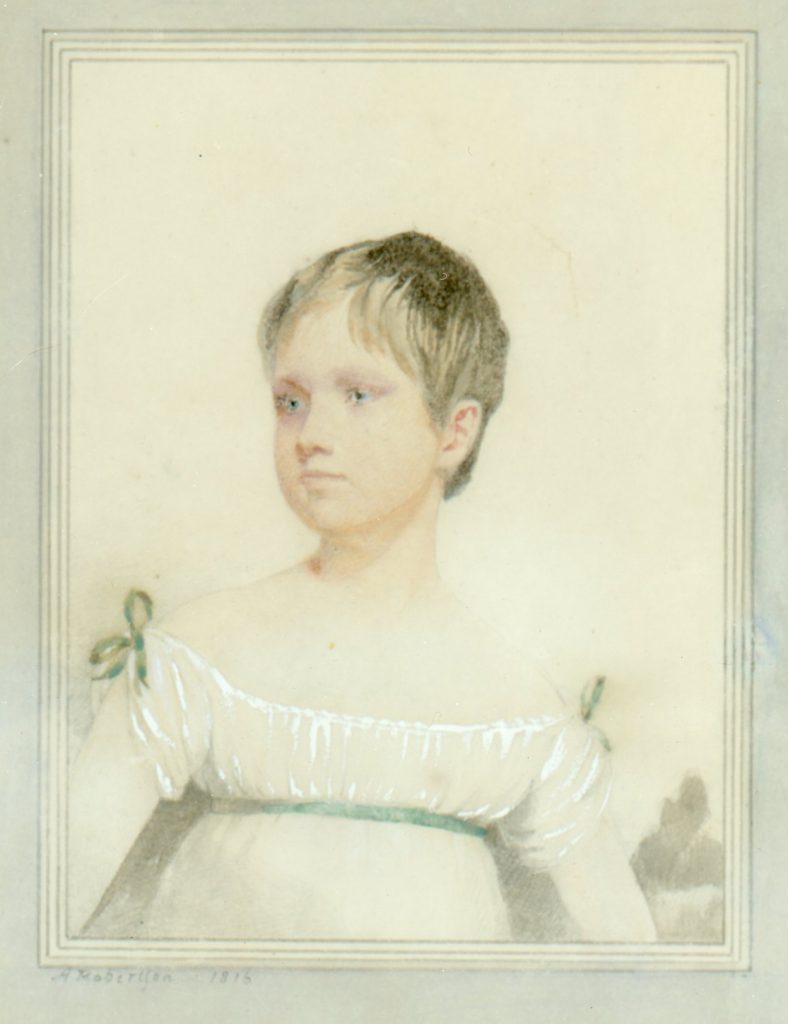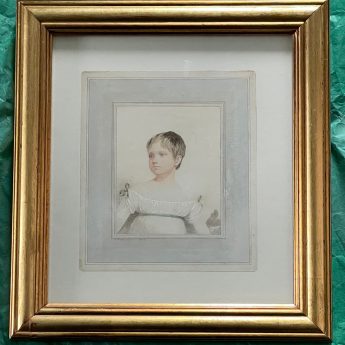
Margaret Chalmers, aged 6
Portrait miniatures, silhouettes, portraits & an omnium-gatherum of historical interest & character.
Enquiries and orders
Margaret Chalmers, aged 6
Andrew Robertson
Sold
This sensitively painted small portrait shows six-year-old Margaret Chalmers in a traditional white muslin dress with olive green ribbon trimmings. It is signed and dated ‘A. Robertson 1816’.
Born in 1810 in the East Indies, Margaret was the eldest of thirteen children born to Scotsman Dr William Chalmers and his Dutch wife Elizabeth Pungel. Miraculously for the time, all the children survived into adulthood. In 1818 the family moved from Malacca to Bengal though the children would likely have been sent back home to Scotland to be educated. Margaret grew up to marry Capt. Alexander Brown of the East India Company in 1833 and with him had six children. At the time of her death in 1889 at the age of 78, Margaret was living in Brisbane, Australia so she was quite the globetrotter!
Margaret’s father was born in Aberdeen as was the artist Andrew Robertson so it seems likely that the two families were acquainted. Both men also studied medicine, albeit a decade apart, so they may have met professionally at this point. This portrait may therefore have been captured informally and gifted to Margaret’s family as a keepsake. It was certainly treasured enough to have stayed in the family for generations.
Painted on paper in watercolour with opaque white and with a watercolour wash and line border, the portrait is presented in a later gilt wood frame. There are extensive typescript family details attached to the reverse.
The son of a Scottish architect, Andrew Robertson (1777-1845) showed early musical talent but chose to pursue drawing and painting as a career despite having already studied medicine. In 1801 he sailed from Edinburgh to London where he entered the Royal Academy Schools. There he benefitted from the influential patronage of Benjamin West President of the Royal Academy and, in 1805, was appointed Miniature Painter to the Duke of Sussex (George IV’s younger brother). Robertson worked hard at perfecting his art but also found time to set about raising an Artists of London Volunteer Corps in response to the threat of French invasion, intending to use the Royal Academy building as an arms depot. The plan was not, however, sanctioned by the Government. In 1816, the year of this portrait, he was busy designing a Waterloo Monument based on the Parthenon to be built using Aberdeen granite. Alas, the project did not come to fruition.
Item Ref. 5904
Size: framed, 315 x 290mm (12⅜ x 11⅜")
Provenance: By family descent
